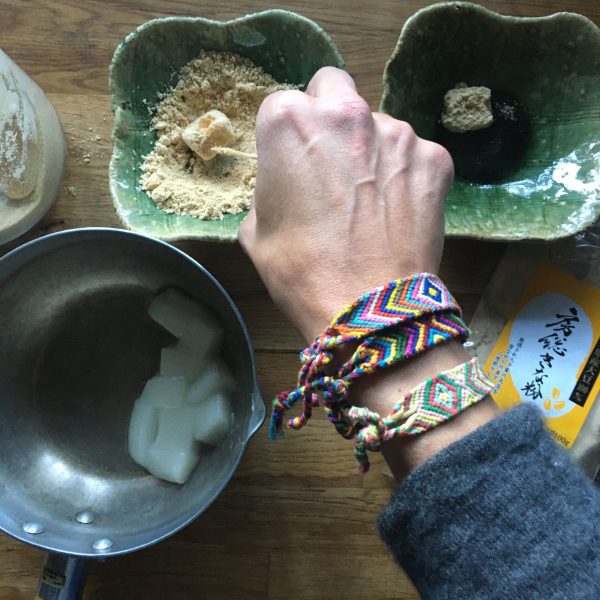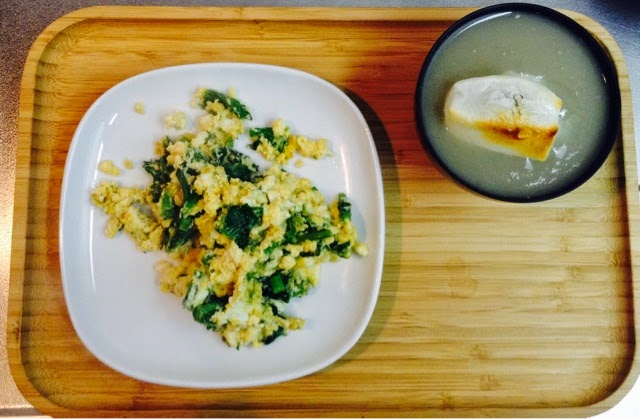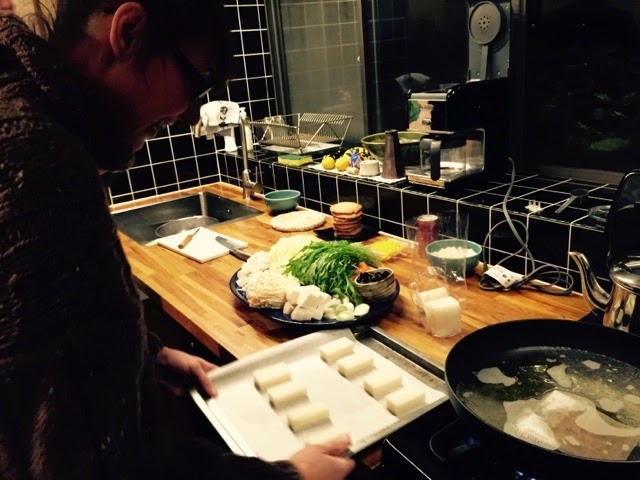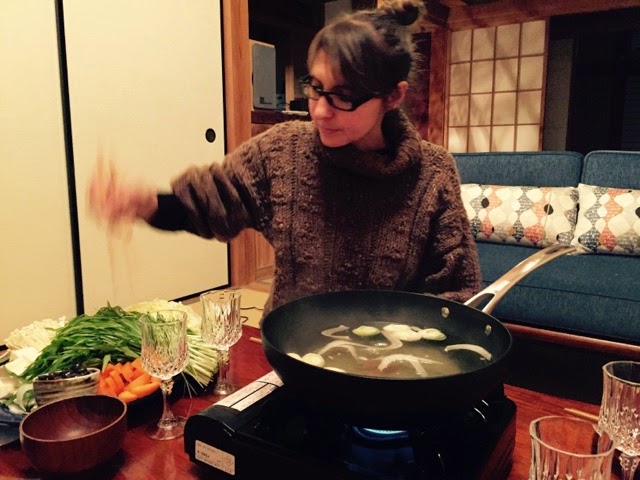If you have read Natsume Soseki’s novel the cat, watched Juzo Itami’s Tampopo or check the Japanese news today, you may not think highly of this Japanese new year specialty that is eaten widely, but kills about 300 people every year!!! No kidding! Despite the caution announcement every year before new year. And if you are more than 65 the risk maybe high that you suffocate eating mochi if you are not careful! But being careful is easy, and mochi is delicious. So let’s get passed the first bad impression, talk about mochi and let me share with you a few delicious ways to eat mochi.
First thing first, you may have heard about mochi but what is it exactly? In most places it is translated as rice cake, but I think it is a bit misleading. Mochi is made of mochigome 餅米 a round rice, slightly more glutinous than the rice you would eat normally, it is cooked them crushed into a paste, the paste is then shaped into a ball of various sizes (smaller are less dangerous to choke on). Making mochi for new year is a tradition and there are plenty of opportunities to go to mochi-dsuki 餅つき events in local communities. We went to our first one in January 2005 with our Japanese teacher. That was fun to pound the rice in a large wooden standing bowl called usu 臼, carved in a trunk, with a huge wooden mallet or pestel called kine 杵.
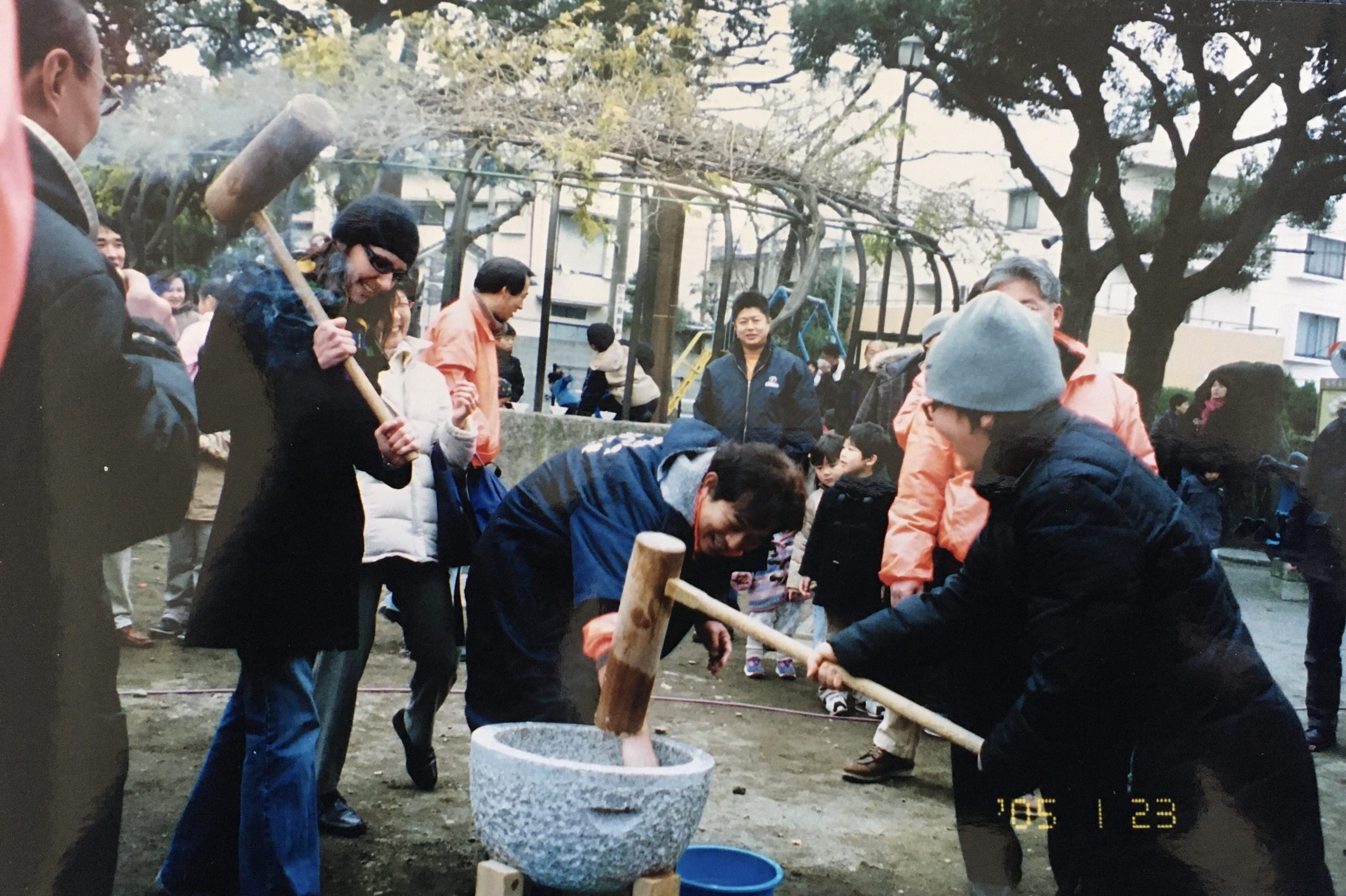
Of course we were scared to try eating it (for the above reasons ;)), but in the end we enjoyed it very much in many many ways: in soup (ozoni), with nori and soya sauce, with kinako, with red beans etc…
Not everyone is equipped with a set to make mochi at home and not everyone makes at least 2kg of mochi at once, so there are other ways to get your hand on mochi and to try this very special Japanese specialty. Here are some options I recommend: steamed mochi rice hand crushed and pound in a mortar, fresh mochi in grocery shops (not so easy to find in the city, easier in the countryside) but it doesn’t keep for long, kirimochi 切り餅, it is basically dried mochi that is very easy to use and keeps much longer and is nice for also making grilled mochi (if you want some let me know I can arrange shipment wherever you are, DM me on Instagram or Facebook). Some websites offers to make mochi with a mixer, but it seems that without a powerful one all you may do is burn your motor, so I wouldn’t actually recommend it. Some others propose to make it from mochi rice flour, I have never tried and I guess it is OK but it will lack the slightly granulous texture that you can have with pounded rice.
Once you have your mochi ready it is really easy to prepare in one of the many possible versions savory or sweet. If you use kirimochi you may need to return it to softness by simply putting in a pan cover with water and boil it a few minutes on both sides until tender. Today I introduce two recipes, one savory ozoni, in a version with only clear broth inspired by a picture I saw on Instagram, but reinterpreted, but you can also add white miso to it to make it more Kyoto-style! and one sweet kinako mochi, but there are many others. Actually one I love is mochi with soya sauce, very simple but so delicious and perfect as a side for a piece of grilled fish or with some vegetables.
Kinako mochi
- soft mochi (if you use kirimochi it needs to be returned to softness)
- kinako (torrefied soya bean powder)
- brown sugar
I a bowl mix 4/1 kinako/sugar (for example 4tsp of kinako and 1tsp of sugar). Cut the mochi into bite sizes. Dip the mochi in water and roll in the kinako mix, set in a bowl. You can make as much as you want it is very easy to eat and really delicious!!! The picture below is what I made for two for a tea-time snack. There was about 8-10 small bites.
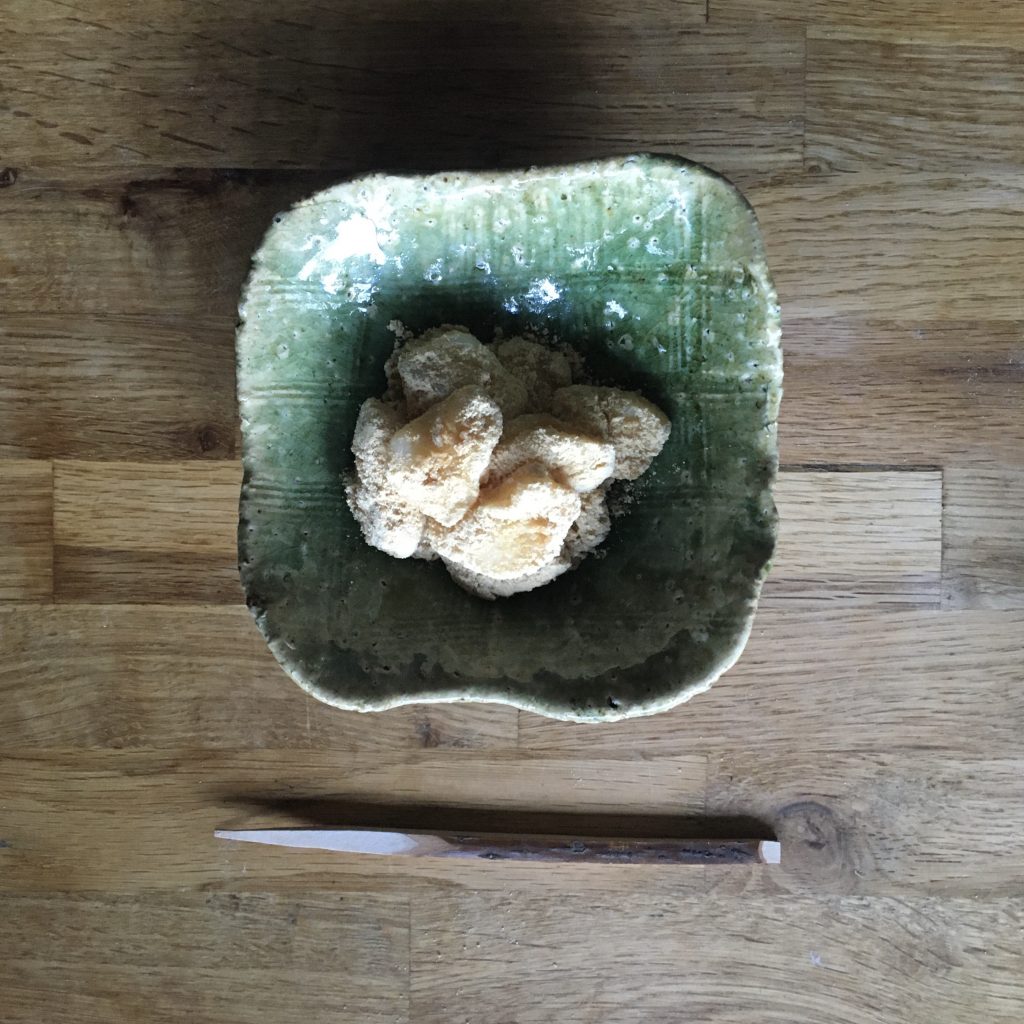
Ozoni (without miso) (2 servings)
- 500ml of dashi ( I use ichiban dashi (konbu & katsuo) but you can also do with konbu & shiitake dashi for a vegan version)
- 2 pieces of kirimochi
- 2 umeboshi
- a few seasonal vegetables: 1 carrot, a few spinach leaves or 1 small bok choy…, 2 little turnips…
- optional a zest of yuzu
In a pan, prepare the dashi. In another pan, return the kirimochi until soft. Prepare the vegetables (I used a cookie cutter to make the carrot in plum shapes). Cook them in the pan with the dashi, until just tender. In a bowl of your choice set the mochi, dress the vegetables, add the umeboshi, the yuzu peel and cover with the dashi. Enjoy while it’s hot.
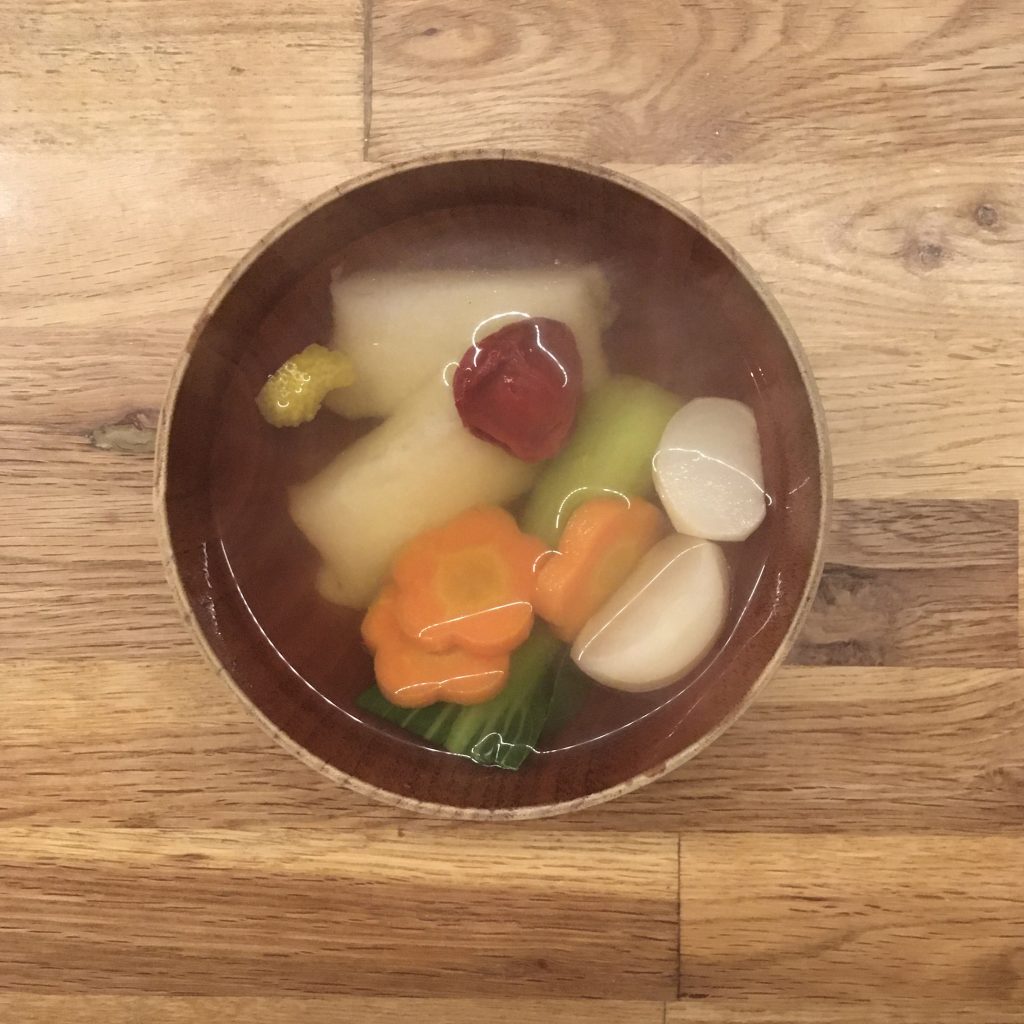
Again send me a message on Instagram or Facebook if you want dashi, kinako or kirimochi.
